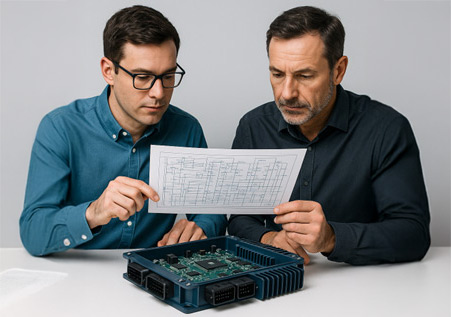Bringing Safety Culture to Life
Safety culture often remains abstract – distant from the reality of project work.
For us, safety culture is more than a principle – it’s the foundation of how we work.
It means complete honesty with our clients, a deep sense of responsibility in every project phase, and the constant drive to develop the most effective and reliable solutions for trustworthy systems.
Building Trusted Partnerships
Entrusting someone with a task critical to your product development is a big decision – and an even bigger one if your product is safety-critical.

Our team has already contributed to a wide range of safety-critical development projects – always with a focus on quality and what is actually relevant.
For us, safety follows intrinsically from quality – through thoughtful application of standards, not blind compliance. When development is based on solid architectures, clean code, and well-suited processes applied by skilled people, achieving functional safety is only a small step away.
After all, the goal is to create a safe, reliable product – not an extremely well-documented unsafe one.
You’re very welcome to talk to us about previous projects, customer satisfaction, and successful assessments – or about your next development task.